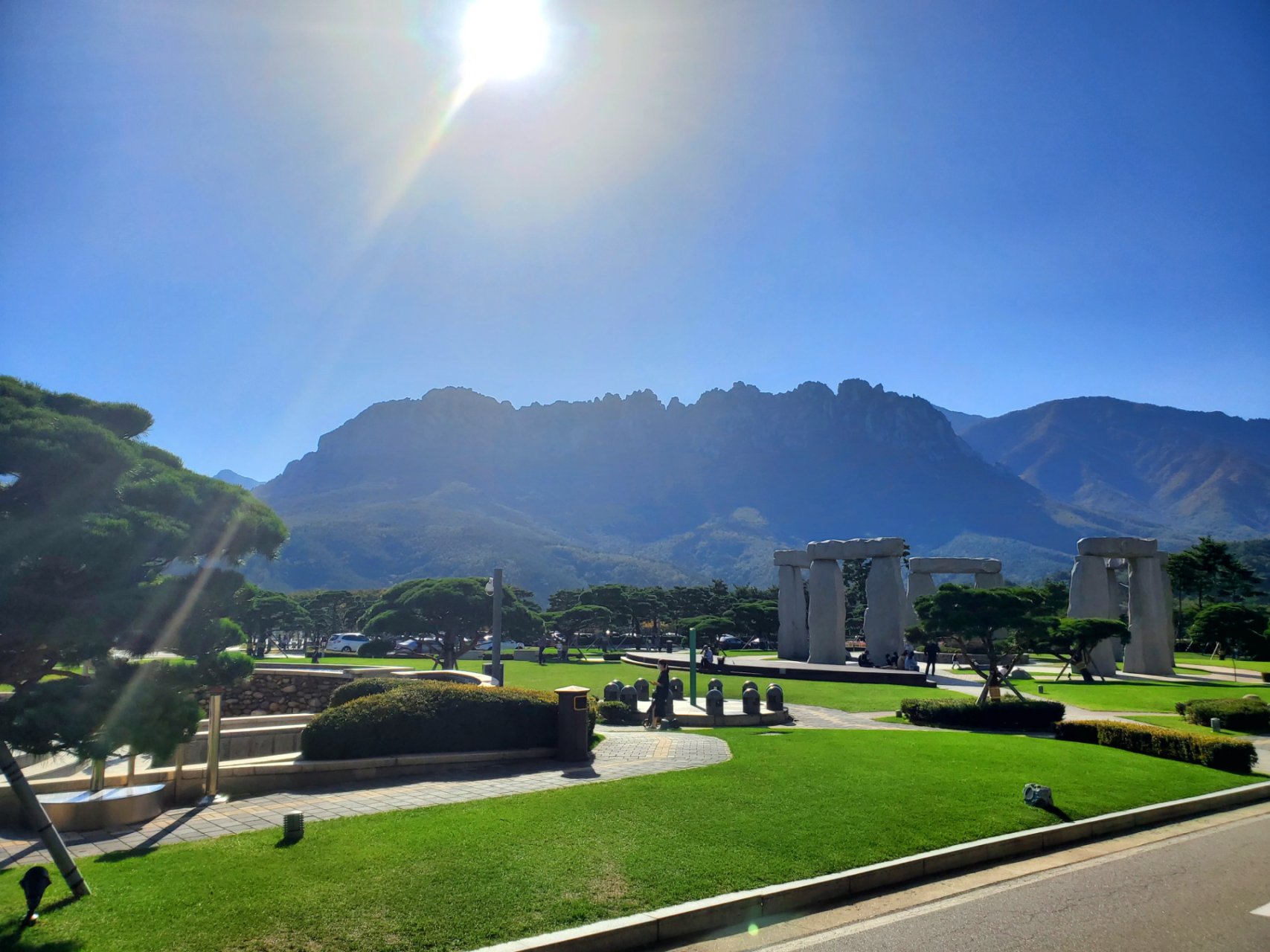Discovering Sokcho & Seoraksan National Park: Where Mountains Meet the Sea
Nestled along South Korea’s rugged eastern coast, Sokcho and the neighboring Seoraksan National Park form a mesmerizing blend of natural grandeur and coastal charm. Sokcho, a bustling fishing city, serves as the gateway to Seoraksan—a UNESCO Biosphere Reserve renowned for its jagged peaks, vibrant foliage, and sacred temples. This region captivates travelers with its duality: serene beaches contrast with alpine trails, while fresh seafood markets coexist with ancient Buddhist sanctuaries. Whether you’re drawn to hiking through autumn-kissed valleys, savoring the catch of the day, or immersing yourself in spiritual tranquility, Sokcho and Seoraksan offer a microcosm of Korea’s natural and cultural riches. Join us as we explore the landscapes, flavors, and adventures that define this unforgettable destination.
Natural Beauty of Seoraksan
Seoraksan National Park, often dubbed “the Alps of Korea,” is a masterpiece of biodiversity and geological drama. Its crown jewel, Daecheongbong Peak (1,708 meters), towers above a landscape of granite cliffs, dense forests, and crystal-clear streams. Hikers can traverse the Ulsanbawi Rock trail, a six-kilometer route offering panoramic views of the East Sea, or wander through the Valley of a Thousand Buddhas, where temples like Sinheungsa—home to a towering bronze Buddha—nestle among ancient pines. In autumn, the park transforms into a fiery tapestry of maple and oak, while winter blankets its ridges in snow, creating a haven for cross-country skiing. Rare species, such as the Korean musk deer and Asiatic black bear, add to the park’s ecological allure.
Sokcho’s Coastal Charm
Just 10 kilometers from Seoraksan’s trails lies Sokcho, a city where the rhythm of the sea shapes daily life. Sokcho Beach, with its golden sands and surf-friendly waves, draws sunseekers in summer, while the iconic Sokcho Lighthouse offers year-round sunset vistas. The city’s bustling Jungang Market is a sensory explosion, where vendors sell squid sundae (stuffed sausage) and spicy marinated crab. For a quieter escape, the Cheongcho Lake Boardwalk weaves through wetlands teeming with migratory birds. Don’t miss the Daepo Port, where fishing boats unload their catch daily—grilled squid and abalone are served fresh at nearby stalls, embodying Sokcho’s maritime soul.
Cultural Encounters and Local Cuisine
Sokcho’s cultural fabric is woven with threads of Buddhism, fishing traditions, and Korean modernity. The historic Yeonggeumjeong Pavilion, perched on coastal cliffs, echoes with legends of a magical harp, while the Sokcho Cultural Center showcases traditional nongak (farmers’ dance) performances. Food here is a bridge between land and sea:
- Dakgangjeong: Crispy fried chicken glazed in sweet-spicy sauce, a local specialty.
- Ojingeo Sundae: Squid stuffed with glutinous rice and vegetables.
- Hoe: Sashimi sliced from fish caught hours earlier at Daepo Port.
Pair these dishes with Dongdongju (milky rice wine) for an authentic taste of Sokcho.
Adventure and Relaxation
Whether scaling peaks or soaking in hot springs, the region caters to all paces. Thrill-seekers can tackle Seoraksan’s Dinosaur Ridge, a steep climb rewarded with views of the “12 Apostles” rock formations. For families, the cable car to Gwongeumseong Fortress ruins provides accessible panoramas. After a day of exploration, Osaek Carbonated Hot Springs offer mineral-rich waters believed to soothe muscles, while Sokcho Wellness Spa blends modern therapies with herbal traditions. In winter, nearby Elysian Ski Resort transforms into a snowy playground, ensuring year-round appeal.
Conclusion: A Symphony of Nature and Culture
Sokcho and Seoraksan National Park are more than destinations—they’re an invitation to experience Korea’s elemental contrasts. From the adrenaline of summiting Daecheongbong to the serenity of a temple stay at Sinheungsa, every moment here resonates with discovery. The region’s culinary gems, shaped by mountain forests and ocean tides, tell stories of resilience and tradition. Whether you’re tracing the footsteps of Buddhist monks or savoring squid sundae under a lighthouse glow, Sokcho and Seoraksan leave an indelible imprint. As seasons shift, so do the experiences, ensuring that no two visits are alike. Pack your hiking boots and appetite; this corner of Gangwon Province awaits to redefine your idea of paradise.
